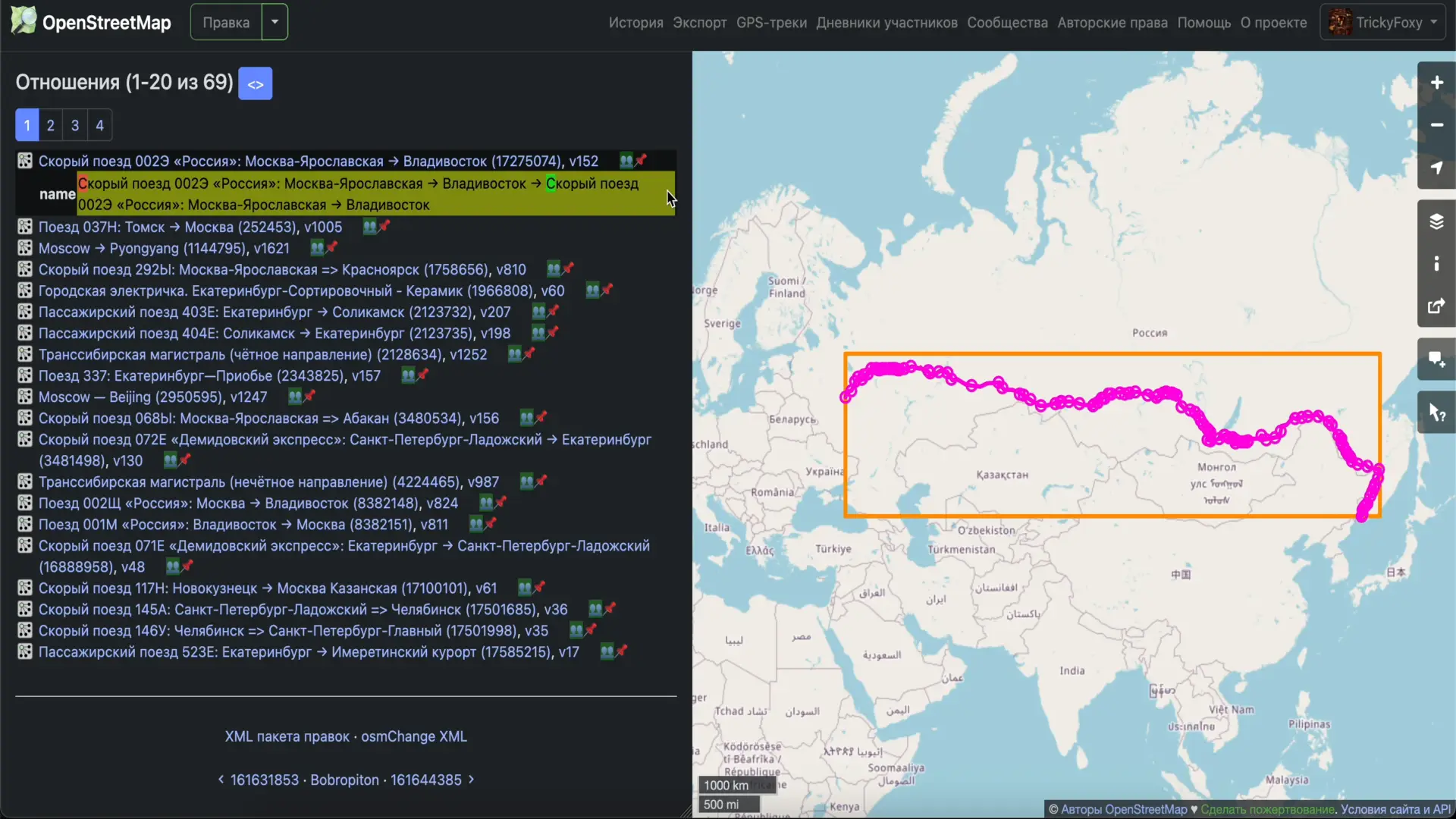Today I will talk about the new version 0.8 of userscript that adds several useful features to osm.org.
You can view existing features of the script and install it on GitHub or in the OSM Wiki
⚡️ Faster rendering
My first PR was merged to openstreetmap-website code, and now the Map Data layer loads instantly. Be sure to try it. Thanks to the maintainers for help!
For the script, this means a huge acceleration in rendering large relations and GPS tracks (yes, tracks, read more!):

icon 👥 near relations is clickable 😉
📸 Photos from Panoramax, StreetComplete, Wikipedia Commons
Now they are displayed directly on the website. In notes, in tag history, and in changesets.








